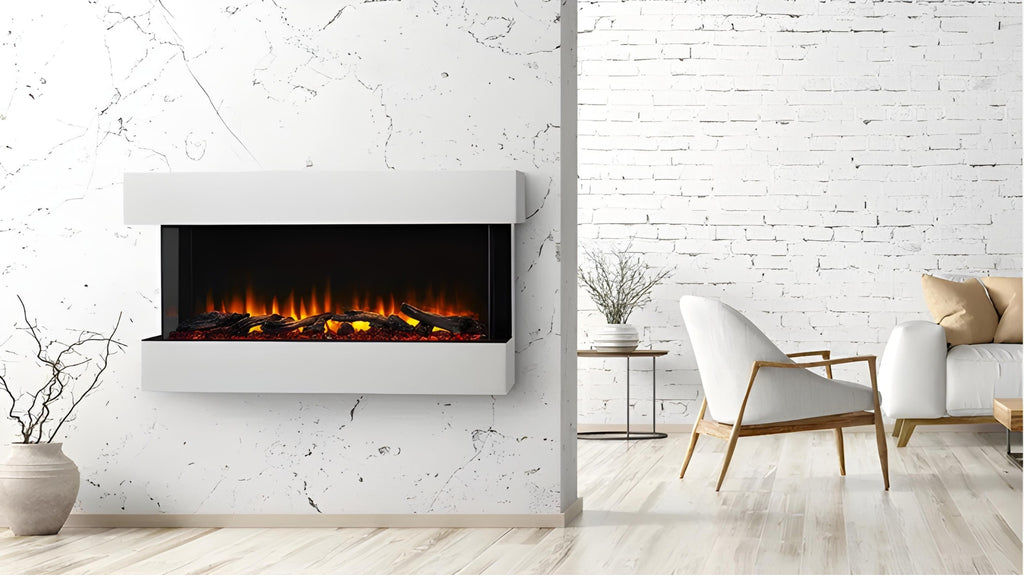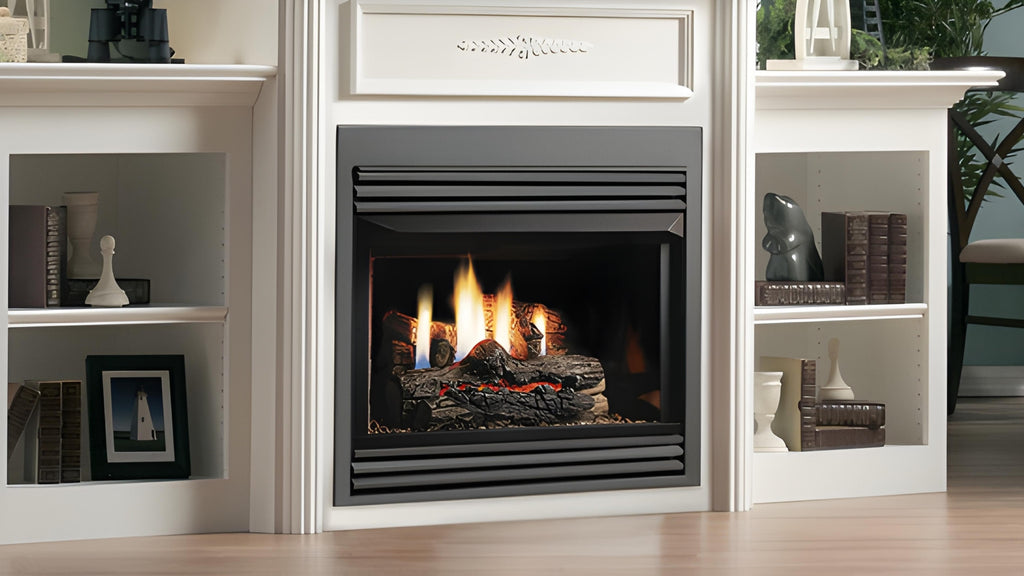5 most common mistakes when choosing fireplace installations
A fireplace is not only a source of heat, but also a decorative element that gives the interior a climate and charm. However, to enjoy its benefits, you need to plan and execute the fireplace installation well. Otherwise, you may face problems with safety, functionality and aesthetics. What mistakes should you avoid when choosing and installing a fireplace? Here are 5 most common ones:
1. Incorrect matching of the fireplace to the room
The first step before buying a fireplace is to determine its power and size. A fireplace that is too large can overheat the room, and a fireplace that is too small will not provide enough heat. As they say, size matters
To match the fireplace to the room well, you need to take into account several factors, such as:
- size and shape of the room
- type and thickness of insulation
- type and number of windows
- heating and ventilation system
- humidity and temperature level
- expectations for thermal comfort
Usually, manufacturers provide an approximate power of the fireplace in kW, which corresponds to the area of the heated room in ft2. However, this is only an approximate value, which does not take into account all individual conditions. Therefore, it is worth using the help of a specialist, who will make an accurate calculation of the heat demand and advise the best model of the fireplace.

2. Incorrect connection of the fireplace to the chimney
The fireplace must be connected to a suitable flue, which discharges exhaust gases, smoke and used air. You cannot connect the fireplace to a ventilation duct, which is against the regulations and endangers the lives of the residents. You also cannot connect the fireplace to a chimney that is already used by another heating device, e.g. a gas boiler. This can lead to backflow of exhaust gases and carbon monoxide poisoning.
Connecting the fireplace to the chimney requires taking into account several aspects, such as:
- diameter and type of flue
- temperature and humidity of exhaust gases
- pressure and speed of air
- height and slope of the chimney
- distance and number of bends of the flue
- sealing and insulation of the flue
Usually, the diameter of the flue cannot be smaller than the diameter of the stub coming out of the fireplace insert. The flue must also be adapted to the temperature of the exhaust gases, which depends on the type of fuel and the mode of combustion. For example, wood-burning fireplaces require fire-resistant flues, and gas fireplaces require acid-resistant flues. In addition, the flue must be properly sealed and insulated to prevent heat loss and condensation of water vapor.
3. Incorrect air circulation in the room
The fireplace needs air for the combustion process, as well as for distributing heat in the room. Therefore, it is important to ensure proper air circulation, which depends on the type of fireplace and the ventilation system. In the case of fireplaces with hot air distribution (HAD), you need to remember to install ventilation grilles, as well as doors with special ventilation holes. Without these elements, the fireplace will “look for” the air necessary for the combustion process in other places. First, it will use the leaks in the windows, which will contribute to the cooling of the room, and then it will reach for the ventilation duct, which will make it difficult to ignite and burn.
In the case of fireplaces with a water jacket, which are connected to the central heating system, you need to take care of the proper water circulation in the system. The water must be heated by the fireplace and distributed to the radiators or underfloor heating, and then return to the fireplace. If the water circulation is too slow or too fast, it can cause overheating or underheating of the fireplace and the installation. Therefore, it is important to use appropriate valves, pumps and thermal protections.

4. Incorrect protection of the fireplace and surroundings
The fireplace is a source of high temperature, which can pose a threat to people, animals and objects. Therefore, you need to properly protect the fireplace and its surroundings, to prevent burns, fires and damages. For this purpose, the following measures are used:
- the floor in the immediate vicinity of the fireplace (about 20 in) should be covered with a material resistant to heat, e.g. stone or ceramic tiles
- the fireplace should be well insulated at the point of contact with the walls, sometimes a additional wall is erected for this purpose
- the fireplace should be equipped with tempered or ceramic glass, which protects against direct contact with fire and reduces heat loss
- the fireplace should be equipped with a grate or door, which prevent the falling out of embers and sparks
- the fireplace should be equipped with a handle or knob, which does not heat up and allows safe opening and closing
- the fireplace should be equipped with an ashtray or drawer, which facilitates the removal of ash and impurities
- the fireplace should be regularly cleaned and maintained, to prevent the accumulation of soot and contaminants
- there should be no flammable objects near the fireplace, such as curtains, carpets, furniture, books, toys, clothes, chemicals, etc.
- there should be a fire extinguisher or fire blanket near the fireplace, which can be used in case of fire
- there should be a smoke and carbon monoxide detector near the fireplace, which will warn of danger

5. Incorrect selection of style and material of the fireplace
The fireplace not only heats, but also is an important element of interior design. Therefore, it is worth taking care of the fireplace to match the style and color scheme of the room in which it is located. There is no one universal rule, how to match the fireplace to the interior, but you can follow some guidelines, such as:
- the fireplace should be proportional to the size and height of the room, so that it does not overwhelm or disappear in the background
- the fireplace should match the style of the interior, e.g. classic, modern, rustic, Scandinavian, etc. You can choose from different materials, shapes and patterns of fireplaces, e.g. metal, stone, wood, simple, rounded, decorated, etc.
- the fireplace should match the color scheme of the interior, e.g. warm, cold, bright, dark, contrast, subdued, etc. You can choose from different colors and shades of fireplaces, e.g. white, black, gray, beige, red, blue, etc.
- the fireplace should match the lighting of the interior, e.g. natural, artificial, bright, dark, point, diffuse, etc. You can choose from different types and colors of flames, e.g. yellow, blue, green, purple, etc.
- the fireplace should match the accessories and decorations of the interior, e.g. paintings, mirrors, pillows, carpets, candles, flowers, etc. You can choose from different decorative elements, which will emphasize the character and atmosphere of the fireplace, e.g. frames, shelves, grates, baskets, pads, etc.
In summary, choosing and installing a fireplace is not only a technical issue, but also an aesthetic one. To fully enjoy the fireplace, you need to avoid 5 most common mistakes, which can spoil the final effect. They are:
- incorrect matching of the fireplace to the room
- incorrect connection of the fireplace to the chimney
- incorrect air circulation in the room
- incorrect protection of the fireplace and surroundings
- incorrect selection of style and material of the fireplace
If you are looking for a fireplace that suits your needs and preferences, you can always count on the experienced advisors of Fireplace Trends - a store that offers electric, gas and traditional wood-burning fireplaces. They will help you choose the best fireplace for your home and provide you with professional installation and service. Visit their website or call them today to find out more. Fireplace Trends - your trusted partner in creating a cozy and beautiful interior.















